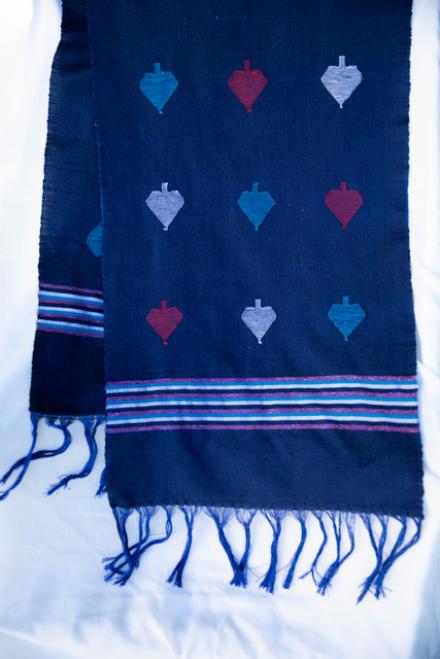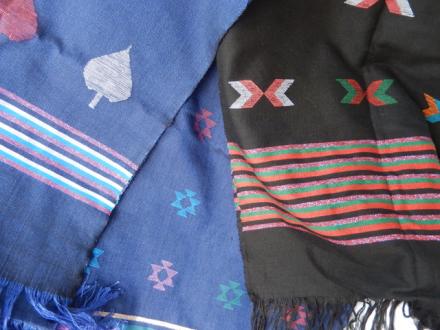

Worcester, MA
United States
The standardized type of shawl from the Nepali-speaking Bhutanese community was often commissioned by the staff in the refugee camp craft houses in Nepal as material to be cut up into smaller cloths to be made into topi, the hat that is part of the Nepali men’s national costume. Red, gray, dark blue, black: these were the standard colors for this type of cloth in the camps. However, in resettlement in Massachusetts Jahar has a much freer hand to choose colors and even major design features, such as this striking textile shows. Jahar is deeply innovative while still drawing on traditional weaving techniques and design concepts. In fact, Jahar has been recognized by the state of Massachusetts as a master weaver and crafts woman. Her textiles are archived by state folklorist Dr. Maggie Holtzberger for the University of Massachusetts-Amherst collection. Jahar’s textiles are tightly woven with precise thread counts and great symmetry. She uses supplementary weft patterning. Her weaving artistry is so excellent that many other Bhutanese weavers consult her. This particular shawl is immediately recognizable within the local Bhutanese weaving community as distinctly Jahar’s work.